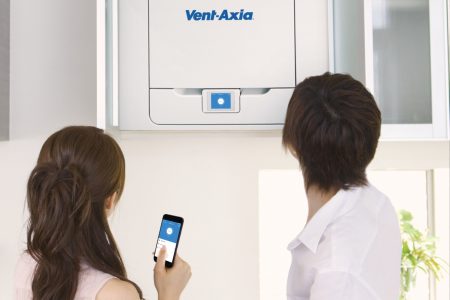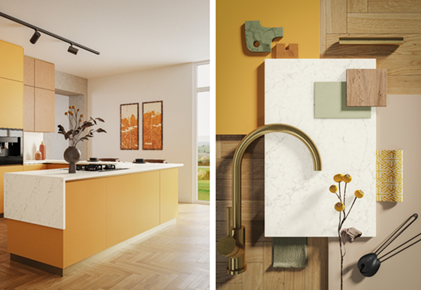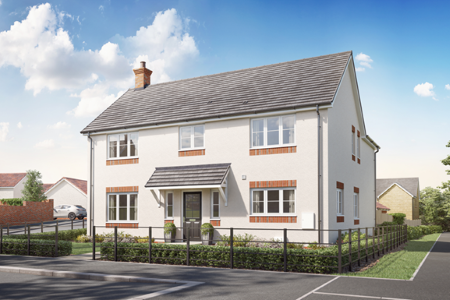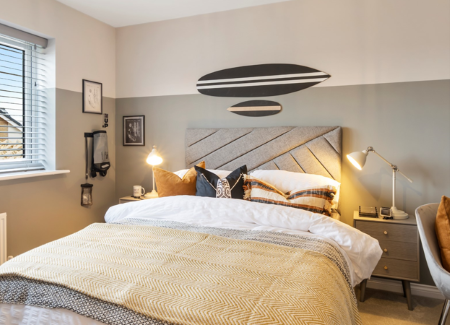Around 40,000 people are dying in the UK every year due to air pollution. Vent-Axia explain indoor air quality & its importance in the home
Every breath you take
Increasingly savvy homebuyers are becoming switched on to the importance of good indoor air quality and what this means for their health. So now it’s essential housebuilders are aware of the issues and research surrounding indoor air quality and how it’s an attractive feature for homebuyers. Ian Mitchell, Product Marketing Manager – New Build Residential at Vent-Axia, explains.
Take a deep breath… Indoor air quality (IAQ) has now become big news. In new build residential properties the introduction of Part L (Conservation of Fuel and Power) of the Building Regulations has helped to ensure new build homes are reaching news standards of energy efficiency while reducing air leakage. However, research now shows reduced ventilation in air tight homes has been found to negatively affect IAQ.
Many of us will have come across a badly ventilated mouldy bathroom but now a growing body of research points to poor IAQ as a major cause of health issues for occupiers. With many people spending the majority of their time indoors, improvements in IAQ must be seen as a priority in new build homes. So with the nation’s health dependent on it, we need to take heed of this growing body of research and ensure good IAQ as both a comfort and health issue in residential new build properties.
The research
The importance of IAQ has been well known within the ventilation sector but has until now has been largely ignored outside the industry, with consumers blissfully unaware of the potential health implications of breathing in polluted air.
This all changed with the recent report from The Royal College of Physicians ‘Every breath we take: The lifelong impact of air pollution’ which has brought IAQ mainstream and warned the households of the dangers associated with poor IAQ. Generating a considerable amount of press coverage, the report contains sobering statistics including stating that around 40,000 people are dying in the UK every year due to air pollution. Exposure to indoor air pollutants such as kitchen products, faulty boilers, open fires, fly sprays air fresheners and second-hand smoke further add to these figures and impact on indoor air quality. And with health problems such as cancer, asthma, stroke and heart disease, diabetes, obesity and dementia all linked to poor air quality, it’s clear that this needs to be urgently addressed in every household.
So why has IAQ only hit the headlines now? As our homes have become increasingly air tight the problems with IAQ have become less easy to ignore. This problem was highlighted in research from Exeter University, ‘Higher energy efficient homes are associated with increased risk of doctor diagnosed asthma in a UK subpopulation.’
The Exeter study is key since it combined detailed asset management property and health data together to assess the impact of household energy efficiency, using Standard Assessment Procedure (SAP), on asthma outcomes in an adult population living in social housing. The results of the research were shocking with a unit increase in SAP rating associated with a 2% increased risk of current asthma, with the greatest risk in homes with SAP>71.
This report was then backed up by recent research from a leading academic at The University of Reading, Professor Hazim Awbi, in ‘The Future of Indoor Air Quality in UK Homes and its Impact on Health’. This found that as new and refurbished homes become ever more air tight to meet the Government’s carbon emission targets for 2050, the number of people suffering with asthma could increase by 80% from current levels. The research also found that indoor pollutant levels could increase to the upper end and beyond of World Health Organisation recommended limits.
The report therefore suggests that there should be a legal requirement for new homes to have an air exchange rate of at least 0.5/hour, to help protect human health. It also advises that the most cost-effective solution for achieving this exchange rate, whilst still satisfying energy efficiency requirements, is the standardised fitting of effective continuous mechanical ventilation, preferably with heat recovery (MVHR). The additional benefit of MVHR systems, is that they provide filtration of the outside air before it enters the building. This contrasts with traditional ventilation systems where replacement air is drawn directly from outside without filtration, this means any external pollution is brought straight into the building, thus missing the opportunity to reduce the particles in the air that we breathe.
Mechanical ventilation with heat recovery
Continuous ventilation systems are designed to work with the natural air infiltration and control the path of air through the home. As a result, they prevent the migration of damaging humidity and pollutants, providing near silent energy efficient ventilation. There are a number of options available, with the latest continuous ventilation systems also offering heat recovery. For new build homes there are mechanical ventilation with heat recovery (MVHR) solutions, such as Vent-Axia’s Sentinel Kinetic Advance, a whole house heat recovery system combining supply and extract ventilation in one unit. Warm, moist air is extracted from ‘wet’ rooms through ducting, passing through the heat exchanger before being exhausted outside. Fresh incoming air is preheated via the integral heat exchanger which recovers 93% of the heat that would otherwise be wasted.
For housebuyers, the Advance features an innovative App that allows them boost the unit and view efficiencies, flow and temperatures enabling households to control IAQ from their sofa. Programmable controllers can schedule Advance to boost when it’s very warm or avoid boosting, perhaps when a baby is sleeping. And with thermal comfort a significant issue in air-tight energy efficient new build properties, Advance includes a fully automatic 100% Summer Bypass, featuring an evening or overnight purge allowing homeowners to choose when to take advantage of cooler air during hot summer periods. It also offers filters up to F7, ensuring even homes in heavily urbanised areas can filter out most impurities, including damaging PM2.5 particles. A filter check warning tells households via email or the App when filters need changing, therefore helping to maintain good IAQ and performance.
For housebuilders the Advance achieves the holy grail of high efficiency and low sound levels with trickle settings of up to 40% that still stay below 20dBA. It boasts a specific power (SFP) as low as 0.38W/l/s, combined with 93% heat recovery and an airflow of 100l/s at 150Pa. Designed for the new build residential market, the Advance tops the PCDB list as the best performing MVHR unit in its class, offering valuable reductions in Dwelling Emission Rates (DER).
This latest MVHR unit has a range of other benefits for housebuilders too. App-controlled functionality means the Advance offers simplified installation and commissioning, saving time on site and so money, reducing build length and improving build quality. When installers use a vane anemometer to measure airflow, using just one hand they can use the App to control airflows during measurement, making it unnecessary to repeatedly return to the unit to adjust fan speeds. This simplifies installation helping ensure accurate commissioning and efficient performance and thus encouraging best practice. Meanwhile, USB functionality allows pre-commissioning, helping save time on developments with same specification builds.
Although research shows indoor air quality can be a real problem in homes, housebuilders will be pleased to hear there are solutions on hand, such as MVHR, which are ideal for new build residential projects. These solutions will become even more important as the Government continues to drive energy efficiency in our homes and air tightness increases. If ventilation is not considered in these air tight homes it will only go to raise the risk of households experiencing aggravated health problems due to poor indoor air quality.







